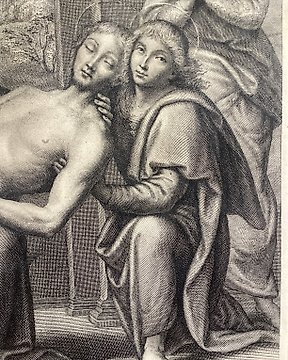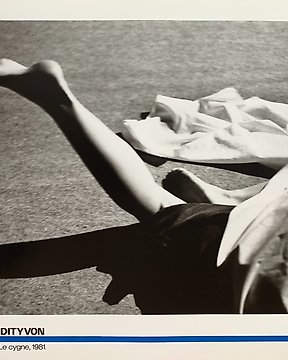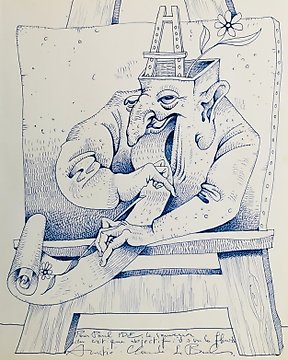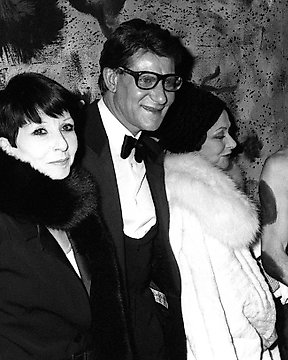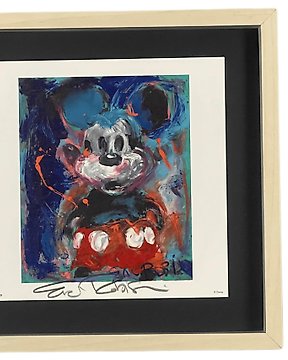Signed, Fernando Botero - The Left-Handed and his Assistants [postcard framed + signed] - 1992
Nr. 14443225
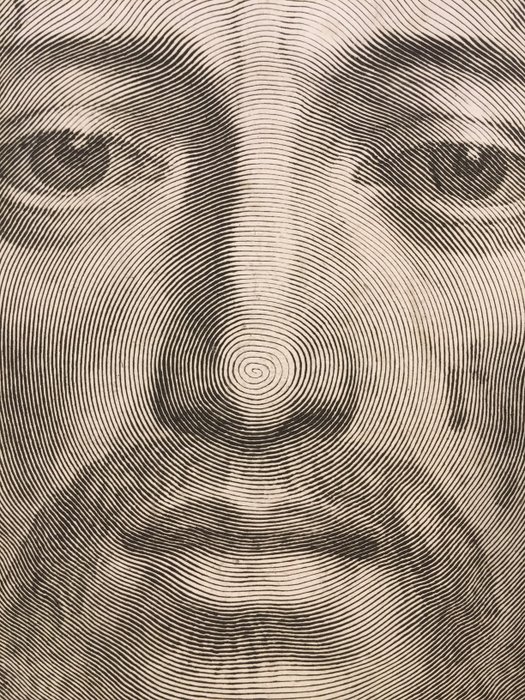
Claude Mellan (1598 - 1688, The veil of Saint Veronica
Nr. 14443225

Claude Mellan (1598 - 1688, The veil of Saint Veronica
Mellan was born in Abbeville in northern France to a family of coppersmiths. By 1619 he was in Paris where he studied engraving and appears also to have been active as a portrait painter. He travelled to Rome in 1624 to study with the engraver Francesco Villamena, who died not long after his arrival. However, he soon came under the powerful influence of the painter Simon Vouet, who encouraged him to make chalk portrait drawings, which became something of Mellan’s specialty. While in Rome, he also practised extensively as an engraver, reproducing the works of Vouet and Bernini in particular. Returning to France in 1636, Mellan found an eager clientele for his restrained yet technically astonishing engravings – which dispense with cross-hatching and outlines altogether – and embarked upon the official phase of his career, with varied prestigious commissions culminating in his appointment as engraver to the king.
Mellan’s most famous print is The veil of Saint Veronica, also known as the Sudarium of Saint Veronica – ‘sudarium’ meaning a cloth for wiping sweat. It is one of the most arresting depictions in European art of the miraculous cloth, which was said to bear the imprint of Christ’s face. Known originally in the Eastern Church as the Mandylion of Edessa, the legend of this holy relic was later taken up and elaborated in the Latin West where it became known as the Vera Icon or ‘true image’. By about 1300 the story had become intimately linked with that of the compassionate woman of Jerusalem called Veronica – her name a deliberate word play on Vera Icon. According to the standard account of the story, while Christ was carrying the cross on the way to Calvary, Veronica was so moved by His suffering that she removed her veil and used it to wipe the blood and sweat from His face. As a reward for her pity, an imprint of Christ’s features was transferred to the cloth. This image of Christ’s true likeness – a portrait which, most remarkably, had not been created by human hands – became the object of a widespread cult, with pilgrims flocking to Rome to venerate it. It also gave rise to a proliferation of copies, which in turn inspired countless works of art.
Mellan’s Veronica is a spectacular tour de force of the engraver’s art. The face of Christ is conjured from a continuous spiralling line that starts at the tip of the nose and is thickened in places to delineate the features and create tone. It is a demonstration of the artist’s unerring skill in guiding the burin – the engraver’s tool used for incising lines. Starting with the tip of his burin in the centre of the plate, Mellan pushed the tool forward while simultaneously rotating the copper plate with his free hand in an anti- clockwise direction to create a near perfect spiral. Today, the original copper plate for Mellan’s print is in the collection of the Bibliothèque royale in Brussels.
The Latin inscription on the hem of the veil, Formatur Unicus Una / Non Alter (the unique one made by one / [like] no other), devised by the abbé Michel de Marolles, a great collector of prints and friend of the artist, develops an ingenious conceit. The words allude to three ideas: the unique mystery of Christ’s Incarnation (by which the Godhead became flesh by being conceived in the womb of the Virgin); the uniqueness of Veronica’s miraculously created image on the cloth; and the uniqueness of Mellan’s engraving itself, devised from a single line, like no other image of the Holy Face.
Peter Raissis, Prints & drawings Europe 1500–1900, 2014
Das könnte Ihnen auch gefallen
- 16+
Dieses Objekt wurde vorgestellt in:
So kaufen Sie auf Catawiki
1. Etwas Besonderes entdecken
2. Höchstgebot abgeben
3. Sichere Zahlung durchführen

